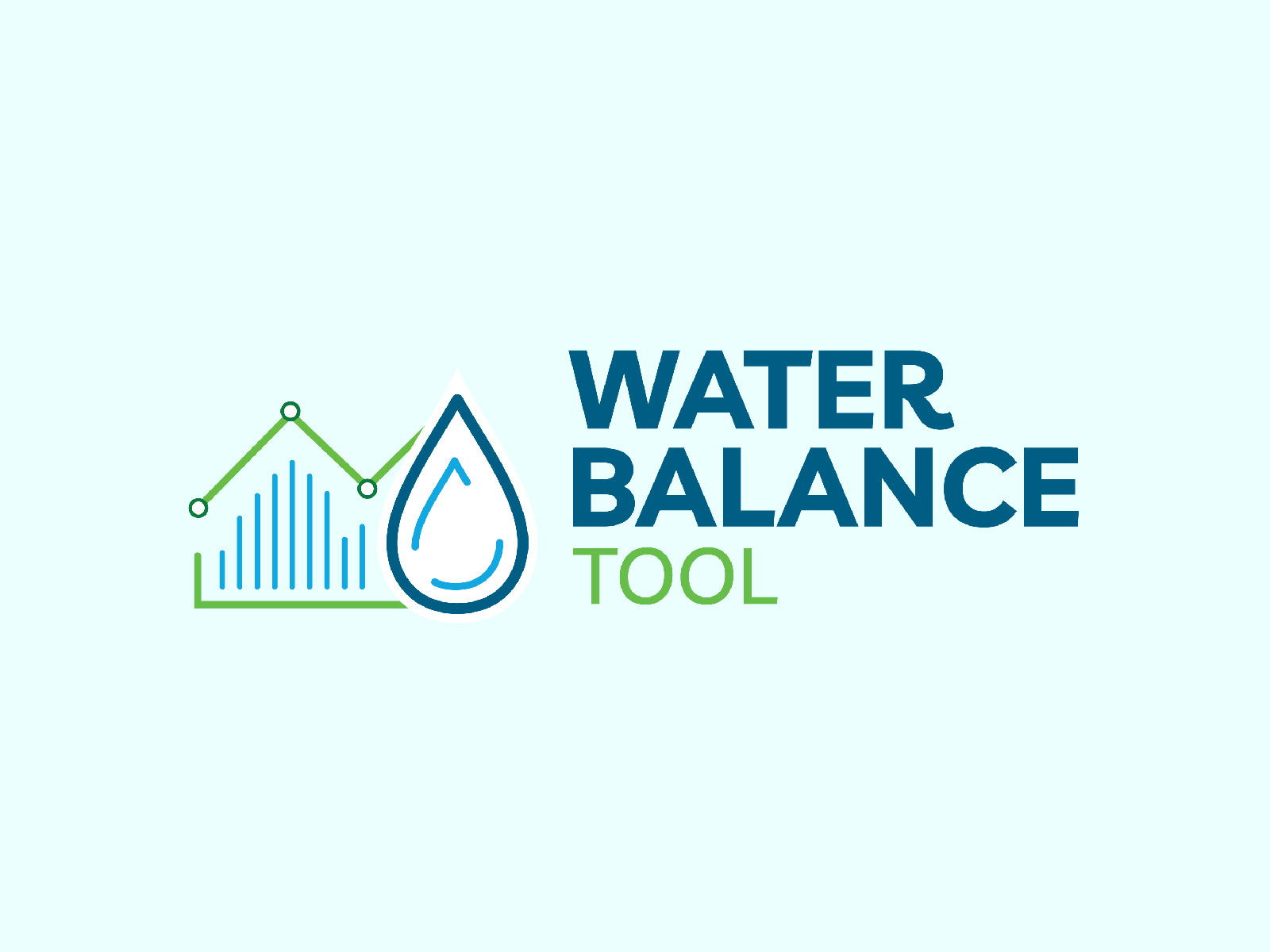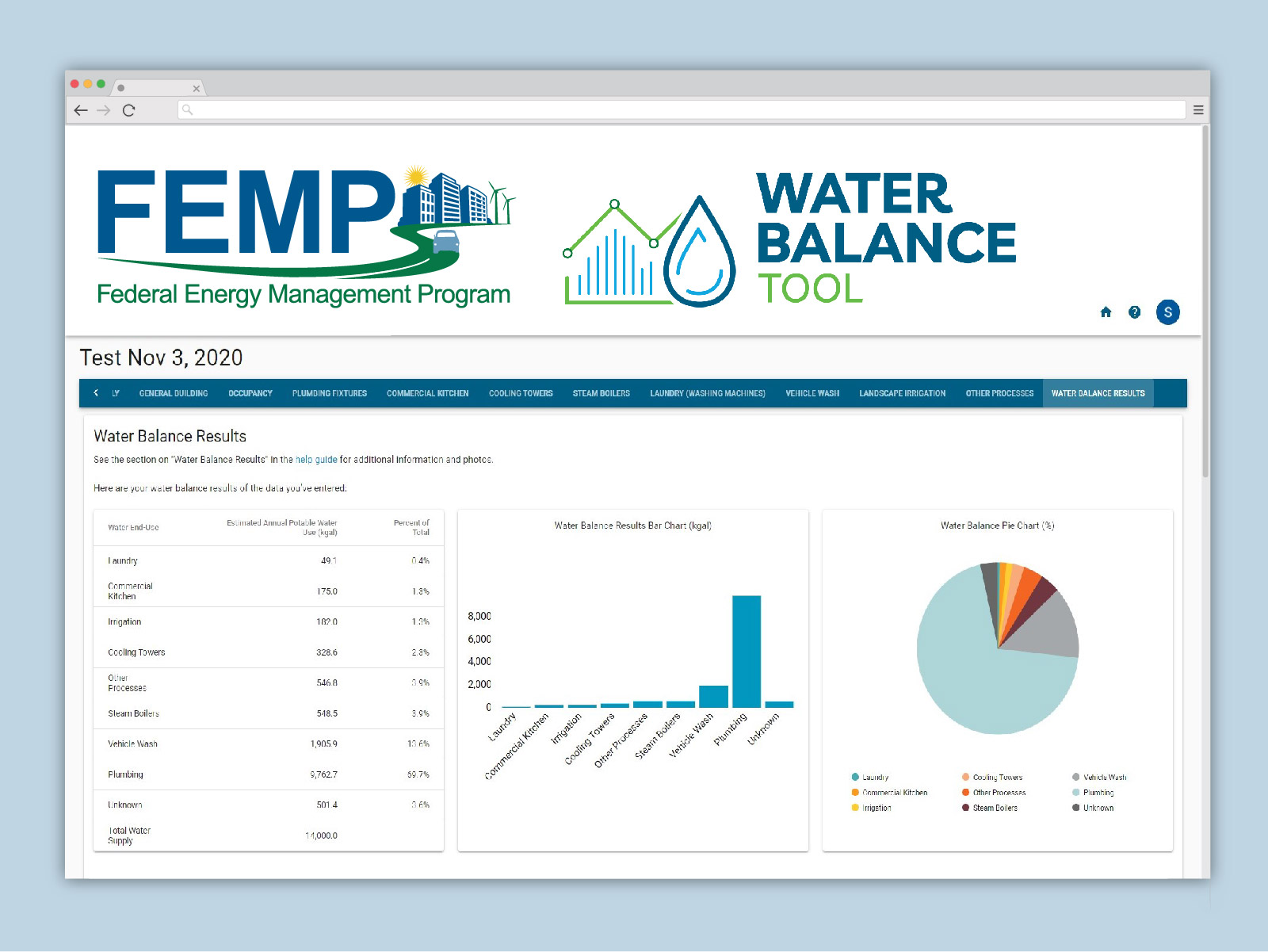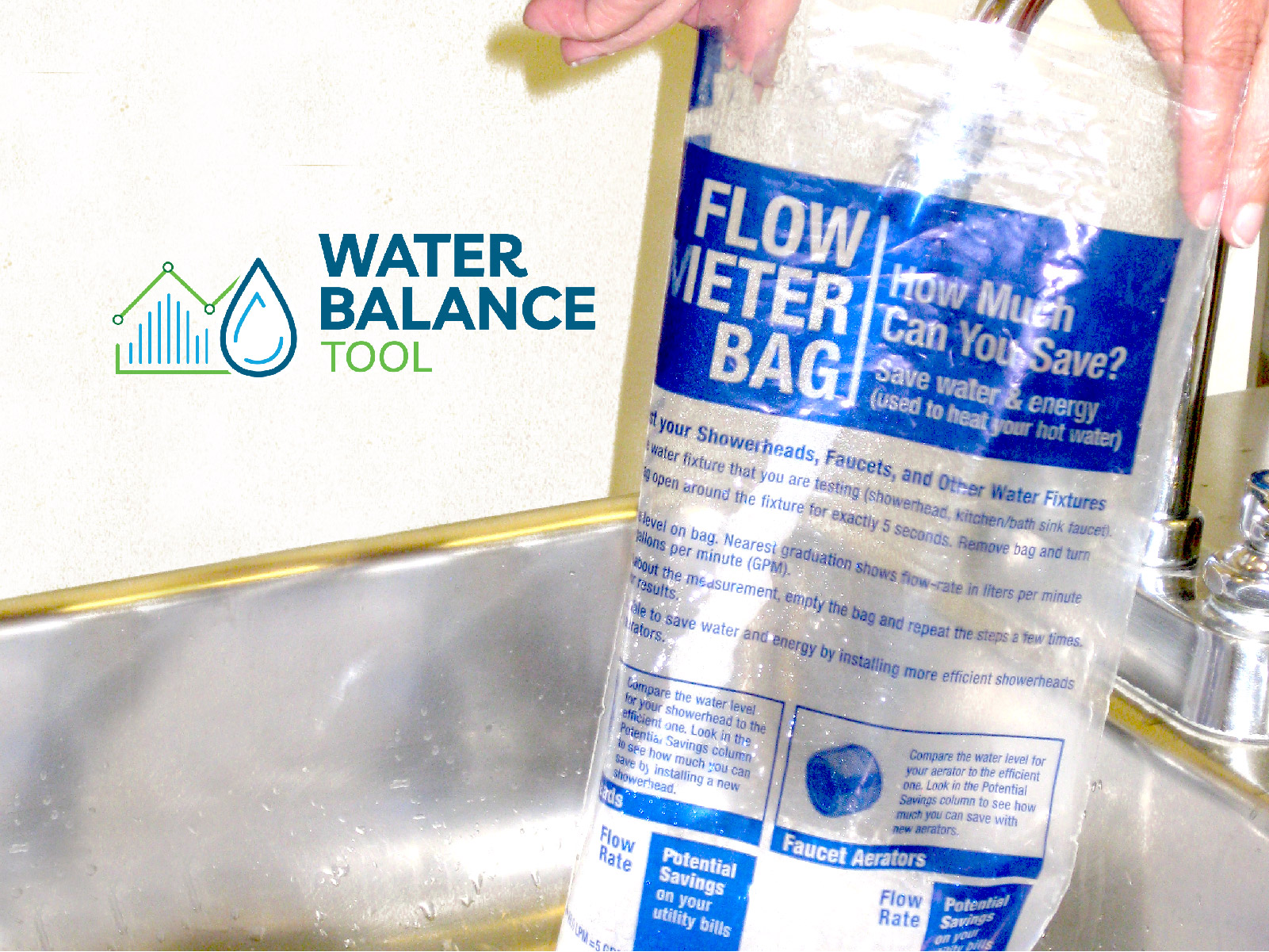
In the quest toward better water stewardship at federal sites, a group of research analysts and experts at Pacific Northwest National Laboratory (PNNL) released a new version of the Water Balance Tool-an easy-to-use tool for estimating a campus's water balance. The Water Balance Tool (WBT) captures a baseline of a facility's current water use across major water end-uses, such as irrigation, cooling towers, and vehicle wash.
Initiated in 2018, PNNL developed an Excel-based tool with supporting documents on performing a walk-through water survey. In 2019, the team built on this concept and created a user-friendly web-based software program to automate the water balance process. The WBT is a unique software platform for calculating facility water end-uses, reducing much of the time intensive labor of performing a manual water balance analysis.
In October 2020, the product team released a new version which streamlines the data collection process and expands the tool's capabilities to include multiple entries for all water end-uses. Although the tool was developed for federal sites, it is broadly applicable to many types of facilities. The tool is free and open to the public, requiring a Google account for access.
The Water Balance Tool streamlines water evaluations

After conducting a walk-through, a survey user can develop a water balance using the online tool with the data collected. Data collected includes water supply data, campus occupancy, and information on all water end-uses present (plumbing, kitchen, laundry, vehicle wash, landscaping irrigation, cooling towers, steam boilers, and other processes). Then, the WBT displays a neatly compiled report estimating water consumption by each end-use and comparing the sum of all end-uses to the total water supplied to the campus. The resulting water balance data helps energy managers identify largest water consuming end-uses that represent good potential for water-saving opportunities, as well as identifying system losses.
"Understanding a breakout of water use is vitally important to sound water management," said Kate Stoughton, who manages water efficiency programs at PNNL. "This one-of-a-kind tool allows facility managers to target water efficiency measures and identify potential water leaks."
Helping energy managers conserve a vital resource

A report published in Earth's Future last year predicts that current freshwater supply in the United States will be unable to meet monthly consumer demands by 2071-increasing the likelihood of shortages. Because of the increasing necessity to conserve water, federal agencies are striving to improve water management. To this end, federal agencies have numerous requirements related to facility water management per 42 U.S.C. § 8253, including comprehensive water evaluations, implementation of water conservation measures, and water metering. With these stringent mandates, it is important that agencies have tools to help meet these requirements.
But until now, the process to conduct a water evaluation and establish a water balance had been cumbersome and time-consuming. To address this challenge, the U.S. Department of Energy's Federal Energy Management Program funded PNNL to streamline how water evaluations are completed.
To that end, the WBT includes a detailed handbook with step-by-step instructions for conducting a walk-through water survey, including photos and general descriptions of typical water-consuming equipment. For example, Susan Loper, a research analyst who led the team that created Federal Energy Management Program's water evaluation tools, said that when agencies perform comprehensive evaluations, the focus is often on energy and water gets neglected. Water is just as critical as energy. In fact, conducting comprehensive evaluations and identifying water conservation measures is a statutory requirement.
"Water often gets overshadowed by energy but failing to properly measure your water consumption means you could be unknowingly leaking water-and money-at any point along your distribution system," said Loper.
"The tool will help you answer questions like 'where is water being used?' and 'where is there potential for water savings'," said Jennifer Williamson, a research engineer at PNNL and member of the team that created the WBT. "You'll quickly learn certain applications may be using more water than you realized."
New release expands data input capabilities
With this recent October release, users have more data entry options, like the ability to enter both campus-wide and single building data for plumbing during a water survey. All end-uses were expanded to include multiple entries. Cooling tower and steam boiler calculations were updated to account for location and specific operating parameters. A single handbook was produced to combine instructions for conducting a walk-through water survey and inputting data into the WBT.
"We want to empower energy managers with actionable insights they can use to make better informed decisions on how to manage their water," said Loper.
The United States Army piloted the WBT at Fort Riley in Kansas as part of a field test for the tool. The site lacks sufficient water meters throughout their campus, making it hard to get an accurate picture of how water is being used. The WBT proved to be just what they needed. The product team used feedback from the field test to inform the recent upgrades to the tool.
"The Water Balance Tool is intuitive and user-friendly. It allowed us to conveniently estimate potable water usage on the installation and look at where we can be a little more efficient," said Hadassa Baker, general engineer for the Operations and Maintenance Division at Fort Riley Public Works.
To use the WBT visit https://water-balance.labworks.org/.






